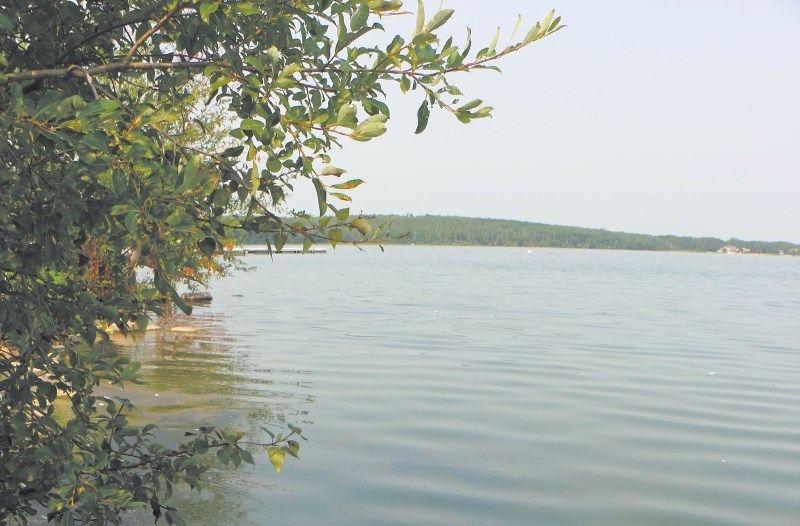The Moose Lake Watershed Society (MLWS) is hoping to get an even deeper understanding of the water body they monitor.
With $50,000 in financial support from the MD of Bonnyville in-hand, the organization will be bringing in Algae Control Canada to conduct an internal phosphorus study.
“We will be taking soil samples from the very bottom of the lake, little cores, and then we will be doing an internal load study. It looks at how much phosphorus, which is really the driver of algae blooms, is located in the sediment itself. There will also be a flux analysis, which tells us how much phosphorus is being released into the water,” explained Kellie Nichiporik, chair of the MLWS. “We’re looking at how much of an internal load, or the stuff that has naturally been there or has settled out over the years, and how much phosphorus we will be dealing with. That helps us target what we can do in the future.”
When the society originally requested $50,000 from the MD, if was for the purchase of qPCR equipment, which would test the DNA of the lake. Instead, they want to re-allocate those dollars towards the over $40,000 inquiry.
MD of Bonnyville Reeve Greg Sawchuk said the reason the MD was on-board with supporting the project is because of the high traffic and number of residents that live on Moose Lake.
”It’s one of the most highly populated lakes, it’s very heavily used, and it’s also very visible to everybody coming into the area,” he exclaimed.
Nichiporik noted their decision to swap projects was partly due to their timeline.
“In part, we felt that time-wise it wasn’t feasible for us to be able to put together all of our sampling protocols and have all of the equipment set up in order to have time to get meaningful data this year. What we would rather do, is we’re going to be working on a business plan during the summer and then we will try to refocus and try to get the equipment at a later date, and have a more inclusive area so we could include surrounding municipalities and watershed stewardship groups and be able to use that equipment for their sampling as well.”
According to Nichiporik, it wasn’t only the MLWS that would have been utilizing the equipment.
Surrounding municipalities would also have access to the qPCR for their own watershed management.
“At this time, we thought the internal load study was something that’s a lot more feasible for us to do, and it’s something that we really needed,” Nichiporik stated.
She added, the society has been conducting “tributary studies since 2014,” which provide data relating to the external load, or where the phosphorus has been entering from the watershed.
However, that testing hasn’t given the MLWS a complete picture of the lake’s phosphorus intake.
”Without knowing what the internal load is, there’s no way we could actually target any kind of management strategies in order to help deal with the phosphorus to help reduce algae blooms,” stressed Nichiporik.
The testing is conducted over two or three days. An Algae Control Canada representative will go out onto the lake and take soil samples from roughly 14 different locations.
“They take them from each of the basins and all around the lake, that way you get a good area covered and you have a good idea of what the entire lake is doing,” described Nichiporik.
The samples are analyzed in a lab, which Nichiporik said takes a little bit longer.
From start to finish, the testing is expected to take about 10 weeks.
Nichiporik noted the study won’t disrupt users from enjoying the lake this summer.
“They may see the boat out there sampling. One thing they can do is look for the results and see what comes out of the report,” she added.
Nichiporik said, “The ultimate goal is to create a nutrient budget at the end of it. If a lot of our phosphorus is coming from internal loading, there are different management strategies that can be applied to help deal with that, in of itself.”
Without knowing where the phosphorus is coming from, Nichiporik noted it’s hard to develop a strategy to tackle the issue.
“Ultimately, we’re trying to lower how much phosphorus is in the water, because it’s the driver of the algae blooms and how nutrient-rich our lake is. Without having a really good picture of it, in the past we’ve tried to do some modelling, but it’s based on other lakes and not every lake behaves the same way,” she continued.
Sawchuk agreed that understanding the internal loading on the lake “changes the way you would look at any sort of treatment.”
”If it’s internal loading, it’s not something we can necessarily control, versus using the test equipment, which would have tested for the external loading and finding out what those sources are,” he added. “This is a best first step, and we’re really happy the MLWS brought it forward.”



